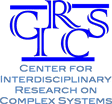Interdisciplinary research at CIRCS falls within the broadly defined areas of biomolecular systems, cardiac systems, neural systems, and nanosystems. Research projects are continuously evolving as members develop new collaborations both within and outside the center and the best snapshot of center activities in any given year is given by the list of center publications and abstracts.
Biomolecular Systems
Research on biomolecular systems extends over a wide range of topics, including molecular interactions from viruses as well as prokaryotic and eukaryotic cells. The methods used to examine these interactions include single molecule force spectroscopy, atomic force microscopy, femtosecond pump-probe kinetics and coherence spectroscopy, nuclear resonance vibrational spectroscopy, infrared crystallography, as well as various types of biochemical analysis methods.
Collaborations between CIRCS members have resulted in several important interdisciplinary discoveries. Examples of active collaborations include:
Characterization of the E. coli alpha polymerase subunit interactions with DNA using optical tweezers and polymerization assays (Penny J. Beuning and Mark C. Williams)
Atomic force microscopy and single molecule optical tweezers studies to elucidate the mechanism by which high mobility group proteins alter DNA flexibility to facilitate transcription (Mark C. Williams and Nathan Israeloff)
Probing the low frequency, thermally accessible, vibrational motions of biological systems that contain iron. Studies of heme and iron-sulfur proteins and their isolated active site chromophores have revealed key coordinates that govern the fundamental biological mechanisms of electron transfer and diatomic molecule binding (J. Timothy Sage and Paul M. Champion)
Cardiac Systems
Cardiac disease is a major cause of premature death. More than half of cardiac disease deaths are sudden and result from a spatiotemporally chaotic wave activity that prevents the main chambers of the heart from pumping blood normally. Developing a fundamental understanding of the mechanisms that trigger and maintain life-threatening cardiac arrhythmias is crucially important for designing antiarrhythmic therapies that successfully reduce mortality.
Collaborating with biologists and clinicians, Karma’s group is using theoretical models and computer simulations to elucidate basic mechanisms of arrhythmias from subcellular scales to the whole organ level. Recent work has focused on understanding period-doubling oscillations of voltage and calcium activity known as “alternans” that predispose the heart to lethal rhythm disorders and developing new approaches to control those disorders.
Materials Systems
CIRCS activities in this area focus on the development of state-of-the-art computational methods to understand the behavior of a wide range of technological materials and natural biomaterials such as bone. Processed materials range from structural alloys to nanomaterials with applications to transportation, power generation, solar energy harvesting and nanoelectronics. Methods span atomistic and continuum scales. The micro and nano structures of those materials is controlled to a large degree by complex systems of interfaces, including phase boundaries, grain boundaries, and cracks, and their interactions with materials defects such as dislocations, vacancies, and interstitials. Research in Karma’s group from Physics is centered around the development of scale-bridging phase field methodologies to describe the complex non-equilibrium behavior and interaction of those interfaces and defects.
Karma’s group is collaborating with the groups of Sandra Shefelbine (MIE/BioE) and Randy Erb (MIE) to understand toughness that is a material’s ability to withstand fracture. In biological systems high toughness results from a composite microstructure combining soft flexible proteins with oriented hard mineral crystals. This project combines computational and experimental studies of crack propagation to determine the relative importance of material anisotropy and heterogeneities in crack path selection and fracture toughness. Novel synthetic discontinuous fiber composites are being produced whereby inhomogeneity and anisotropy of the composite can be tuned with a magnetic field and numerical simulations employing the phase field method are being used to predict complex crack paths in those materials.
Karma’s group is also collaborating with the groups of Yang (Emily) Liu and Deniz Erdogmus to develop novel machine learning enabled bottom up methods to predict the failure behavior of advanced structural and functional materials, ranging from ceramic matrix composites used in aerospace structures that exhibit low density, high hardness as well as superior thermal and chemical resistance, to mechanically active biomimetic composites for soft robotics. The project combines state-of-the-art materials modeling methods to generate large data sets characterizing the mechanical and failure behaviors of different statistically sampled geometric distributions of particles in a host matrix with machine learning to learn from those data sets generalized constitutive laws governing crack initiation and propagation, thereby enabling efficient information passing from bottom up for accurate predictions of failure properties and computationally aided materials design.
Neural Systems
The subject of neuroscience is truly multidisciplinary. It encompasses such disciplines as anatomy, physiology, molecular and cell biology, psychology, and, more recently, computer science and physics. The most interesting discoveries in neuroscience are made at the crossroads of these disciplines, and neuroscience research at its forefront is often driven by interdisciplinary collaborations. At CIRCS, the Stepanyant lab is developing the emerging science of neurogeometry, which focuses on understanding the structure of brain wiring by using a combination of data analysis and optimization principles rooted in statistical physics. Due to the complexity of neuron morphology, large datasets of reconstructed neurons must be generated with automated algorithms. The Stepanyants lab is developing algorithms and software tools to automate neuron reconstruction from confocal microscopy stacks of images, making it possible to extract quantitative information from a wide variety of neuron labeling and imaging techniques
